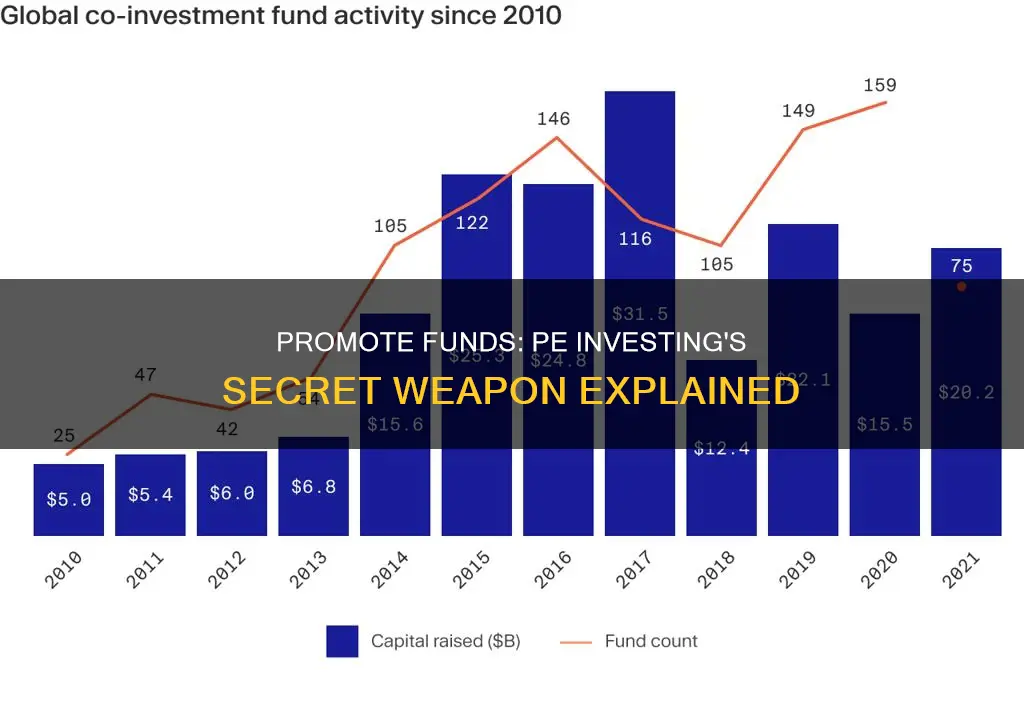
Private equity (PE) firms are known for their lucrative compensation structures, which are often comprised of a management fee and a promote fee, also known as a carried interest or sponsor promote fee. This fee is a performance-based incentive that motivates sponsors to maximise returns for investors. In real estate jargon, this fee is simply referred to as a promote.
The promote fee is the sponsor's disproportionate share of profits in a real estate deal above a predetermined return threshold. Sponsors, or General Partners (GPs), typically contribute 5-10% of the capital in a deal, while investors, or Limited Partners (LPs), contribute 90-95%. Once the preferred return or hurdle rate is achieved, the GP is entitled to receive a promote fee, which is a larger share of the profits than their pro-rata capital investment. This fee compensates the sponsor for their efforts and expertise in creating value for the investment and bearing a disproportionate share of downside risk.
The promote fee structure varies depending on the sponsor and the type of property, and it can be negotiated between the GP and LP. It is an essential concept for individuals investing in real estate private equity funds as it aligns the interests of the sponsor with those of the investors, creating a mutually beneficial outcome when the fund generates significant returns.
Characteristics of Promote Funds in PE Investing
| Characteristics | Values |
|---|---|
| Other names | Sponsor promote, carried interest, promoted interest |
| Who earns it | General Partner (GP) or sponsor |
| Purpose | Performance-based fee, incentive for sponsors |
| Calculation | Percentage of LP's share of profits after preferred return or hurdle |
| When paid | Once achieved per agreement between GP and investor |
| Typical percentage | 20-30% |
What You'll Learn

Promote fund vs. carried interest
A promote fund is a share of the profits of a real estate private equity (REPE) investment paid to the general partner (GP) as compensation for creating value in an investment or bearing a disproportionate share of downside risk. The GP is rewarded for their work through a combination of fees, a share of profits, and what is called a promote fund or sponsor promote fee. The promote fund is considered an incentive fee, designed to compensate the sponsor for their work and expertise and to incentivise them to make the investment successful.
Carried interest, on the other hand, is a share of profits earned by general partners of private equity, venture capital, and hedge funds. It is a performance fee that corresponds to a partner's role rather than their investment in the fund. Carried interest is paid from profits and is generally taxed as capital gains, which are lower than ordinary income tax rates. The carried interest portion of a general partner's compensation typically vests over a number of years and can be forfeited if the fund underperforms.
In terms of similarities, both promote funds and carried interest are forms of compensation for general partners or sponsors. They are both related to the profits of an investment and are designed to incentivise the general partner to maximise those profits.
However, the key difference is that promote funds are specific to real estate private equity investments, whereas carried interest applies to private equity, venture capital, and hedge funds. Additionally, promote funds are typically only paid to the general partner if the investment returns meet certain thresholds or benchmarks, whereas carried interest is usually paid if the fund achieves a minimum return, known as the hurdle rate.
Micro Cap Fund: DSP Blackrock's Smart Investment Option
You may want to see also

How promote funds work
Promote funds, also known as carried interest or promoted interest, are a key concept in real estate private equity funds. They refer to the sponsor's disproportionate share of profits in a real estate deal above a predetermined return threshold. This incentive fee is designed to compensate the sponsor for their work and expertise and to motivate them to maximise the investment's success.
In a typical promote fund structure, investors are offered a preferred return or hurdle rate, which must be achieved before the sponsor can begin receiving their disproportionate share of profits. This preferred return ensures that investors receive a certain return on their investment before the sponsor's promote is triggered.
The calculation of promote funds involves a "waterfall" structure, which details how cash flows will be distributed. This structure can vary significantly between deals and is subject to heavy negotiation. In general, cash flows are distributed in tiers or "buckets", with the first bucket typically returning the contributed capital to investors. Once the contributed capital is returned, the second bucket comes into play, which is the preferred return for investors. After the preferred return is achieved, the sponsor starts earning the promote, which is a larger share of the profits.
For example, consider a scenario where a sponsor contributes 10% of the total equity, and the remaining 90% is raised from other investors. In the first tier of the waterfall, revenues are split on a 90% (investors)/10% (sponsor) basis until everyone has received a full return of capital plus a preferred return, typically in the range of 5-10%. In the second tier, the sponsor earns a higher percentage of the profits, such as 25%, while investors receive the remaining 75%. This disproportionate profit split continues until a higher return threshold is reached, after which the sponsor's share may increase further.
The promote fund structure incentivises sponsors to excel in their roles and exceed expectations. Sponsors are responsible for various critical tasks, including sourcing and identifying assets, negotiating deals, managing properties, and disposing of assets. By offering a larger share of the profits, promote funds motivate sponsors to go above and beyond, resulting in potentially higher returns for all parties involved.
FundsIndia: A Safe Gateway to Mutual Funds?
You may want to see also

Why promote funds are used
Promote funds, or "carried interest", are used in private equity (PE) as a way to compensate sponsors or general partners (GP) for their work and expertise in a real estate deal. It is also designed to incentivize them to make the investment as successful as possible for all parties involved. The promote fee is typically a share of the profits from a PE investment paid to the GP as compensation for creating value or bearing a disproportionate share of downside risk.
The GP plays a crucial role in any PE investment, and their duties are wide-ranging, including administrative, organizational, and property-related tasks. They are responsible for sourcing and identifying assets, negotiating and winning deals, developing asset business plans, conducting due diligence, and executing asset business plans, among other things. The promote fee is their reward for taking on these responsibilities and ensuring the success of the investment.
The promote fee is usually structured as a "waterfall", which is a method of splitting profits among partners in a transaction that allows for uneven distributions. The waterfall structure can be beneficial as it allows equity investors to reward the sponsor with an extra share of returns, motivating them to exceed return expectations. Under this structure, the sponsor will receive a higher share of profits if the project's return is higher than expected and a lower share if the return is lower than expected.
The waterfall structure also serves as a risk management tool as it allows the downside risk to be shifted away from the equity investor while providing upside potential to the sponsor. The traditional structure represents an inverse hierarchy of risk and payment priority, with debt investors or lenders having the first repayment priority and the lowest risk, followed by equity investors, and finally, the sponsor, who takes on the highest level of risk but also has the highest upside potential. The waterfall structure positively compensates the sponsor for a successful project while minimizing the downside risk for the equity investor, thus distributing risk and return more equitably.
In summary, promote funds are used to align the interests of sponsors and investors, providing incentives for sponsors to work towards the success of the investment while ensuring that their efforts are justly compensated.
Emergency Fund Strategies: UK Investment Options for Peace of Mind
You may want to see also

How promote funds are calculated
A promote fund, also known as a sponsor promote fee, is a share of the profits of a real estate private equity (REPE) investment paid to the general partner (GP) as compensation for creating value in an investment or bearing a disproportionate share of downside risk.
The calculation of promote funds involves a multi-tiered structure known as the "distribution waterfall" or simply "waterfall". This structure incentivises the GP to maximise the profitability of the investment. The basic concept is that the more investors get paid, the better the GP's return becomes.
Let's assume a GP helps acquire a $10,000,000 multi-family property with $3,000,000 in equity and $7,000,000 in debt (mortgage). The GP contributes 10% of the equity ($300,000), while the other investors (limited partners) contribute 90% ($2,700,000). The limited partners are to receive an 8% preferred return, and then a 70/30 split of the cash flow in their favour.
Assuming the property produces a cash flow of $400,000, resulting in a cash-on-cash return of 13.3%, the promote fund calculation may look like this:
- $216,000 is distributed to the limited partners, equal to an 8.0% return on their investment of $2,700,000.
- The remaining $184,000 of cash flow is distributed 70% to the limited partners ($128,800) and 30% to the GP ($55,200).
In total, the limited partners receive $344,800, which equates to an 11.7% cash-on-cash return. The GP receives $55,200, which equates to an 18.4% cash-on-cash return on their investment of $300,000.
So, despite investing only 10% of the equity, the GP receives 18.0% of the cash flow. It is important to note that the GP does not receive any cash flow until after the limited partners have received their preferred return.
The promote fund calculation can vary depending on the sponsor and the type of property. The structure of the promote fund is typically more favourable for the sponsor when they have more work to do to generate targeted returns or when the deal is more complex.
Balance Sheet Basics: Displaying Mutual Fund Investments
You may want to see also

Avoiding a double promote fund scenario
A double promote fund scenario is a situation where cash flows are subject to two waterfalls, or tiers of profit distribution. This can occur when a sponsor runs a fund and simultaneously invests outside of it. In this case, investors in the fund pay the sponsor a promote at the fund level and also pay a promote at the deal level. This results in lowered returns for fund investors as profits are split twice before they receive anything.
To avoid this scenario, investors should be vigilant and carefully review fund documentation. They should look out for funds that invest limited partner equity with a sponsor, as this could potentially lead to a double promote scenario. It is important to understand the specifics of how the fund is structured, how profits are distributed, and whether there are multiple tiers of profit distribution that could result in a double promote.
Additionally, investors can consider working with fund sponsors who do not engage in double promote practices. For example, some fund sponsors may rebate their upside at the deal level back to the fund and choose not to take a promote on that deal for the fund's investment. This ensures that the fund sponsor's upside is based on achieving fund metrics rather than specific deals within the fund.
Furthermore, investors can opt for funds with a direct-to-investor platform, which typically only includes one promote paid to the sponsor. Platforms that use a special purpose vehicle (SPV) model to list offerings may be more prone to double promote scenarios.
A Guide to Investing in the Magellan Fund
You may want to see also
Frequently asked questions
A promote fund, also known as a sponsor promote or carried interest, is a performance-based fee that represents the sponsor's disproportionate share of profits in a real estate private equity deal above a predetermined return threshold.
In a promote fund structure, sponsors typically invest their own capital as co-investors alongside other equity investors. Sponsors generally earn the same returns as other investors until a certain threshold, often called the "preferred return," is reached. Above this threshold, sponsors will begin to divide excess profits disproportionately in their favour, earning a larger share of the upside.
The promote fund serves as an incentive for sponsors to maximise the success of the investment. It compensates sponsors for their efforts and expertise in sourcing and managing deals, and motivates them to exceed expectations to increase overall returns.
The promote fund is determined through a "waterfall" structure, which outlines how cash flows will be distributed among lenders, investors, and sponsors. The waterfall structure includes tiers or breakpoints that specify the percentage of profits allocated to each party at different levels of return.







